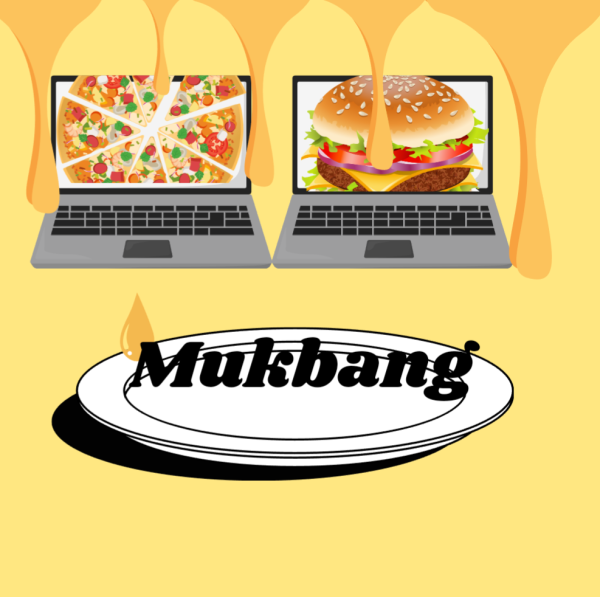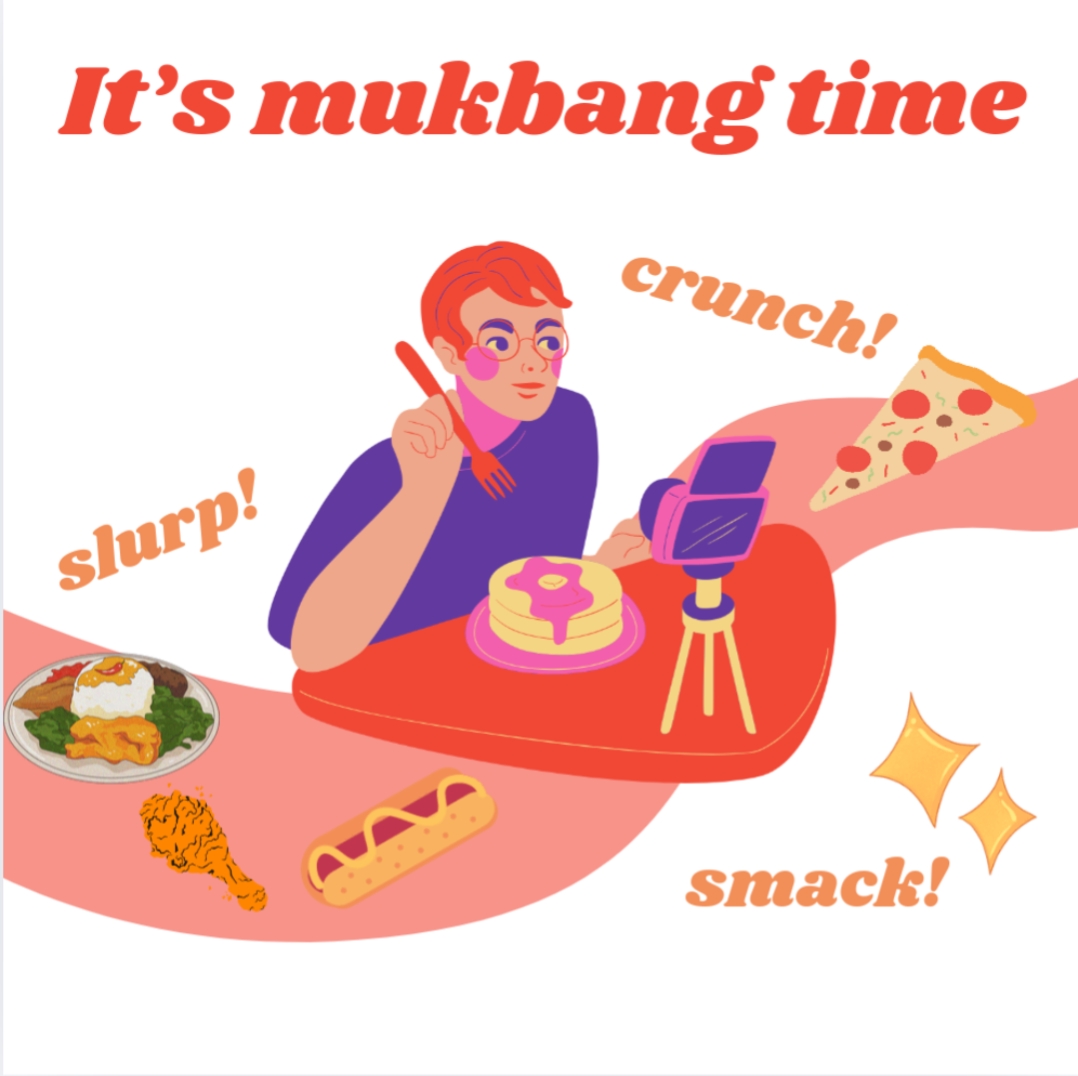Imagine opening YouTube on your phone, glancing at the nearest video and salivating as you find a video with a person posing with huge heaps — almost gargantuan — plates of food. Throughout the video all you can focus on is listening and seeing the gourmandizing of the sloppy, goopy food landsliding down their face, savoring each bite with them.
These videos we consume are called mukbangs: videos of people eating that are often watched for auditory and visual aesthetics and satisfaction. The word “mukbang” originates from South Korea, stemming from the Korean words “meokja” and “bang-song” meaning “eating broadcast.” “Mukbangers” tend to overconsume food for the views of millions of people. People watch the inundated hot Cheeto-dipped chipotle burrito videos and have seen the slobbering Taco Bell grilled cheese burrito content, while mindlessly viewing a mouth-splattering spicy Buldak noodle reel. As their minds are placed on autopilot, watchers may tend to exempt themselves from paying attention to the effects these videos have on their cognitive and physical states. As harmful as it may seem to viewers, many content creators consider the “benefits” of filming these videos to be worth it despite the health consequences that may consume them.
“People need to realize that too much of [watching mukbangs] is not good,” Yanima Mahone (12) said. “Mukbangs are interesting, they give people food ideas and a whole bunch of stuff, but it is also causing a lot of trouble in younger communities.”
The underbelly of the harmful effects of mukbangs begins with the food being presented on peoples’ plates. The “stereotypical” American diet of messy, pleasurable and unhealthy fast food deviates from the true history of mukbangs. It spans from Korean media, focusing more on the enterprise of collecting mass views for the most outrageous, outlandish foods.
“[Mukbangs] give a bad look into our diet culture because it looks like that is all we have,” Zaylie Alvarez (11) said. “[People overseas] already think we are [overweight] and we only eat junk food and Costco is our Walmart.”

The food consumed by mukbangers is secondarily consumed by viewers. The fatty, ultra-indulging guilty pleasure feeds into the deepest desires for junk food. People do not often realize the issues with the food because another person is eating it. However, in complete actuality, it creates a toxic, unhealthy obsession with the food; it reinforces unhealthy binge-eating habits.
“I feel like once we see these junk foods on or from these popular people, we think I am going to eat that now,” Alvarez said. “That is going to be my next meal … most of the popular things to eat are the junk food and the fast food.”
Similarly, mukbangs can also manipulate a viewer’s sense of desire and need for that food. It is an economic ploy to get viewers to engage with the brands and types of foods mukbangers eat. Viewers act on a paper trail of these creators, buying the foods they see at the stores, feeding off their influence regardless of whether the food is good, bad, unhealthy or nutritional for people. The constant exposure of the views and clicks of mukbang videos takes control of people. They pull their wallets out of their pockets in an instant.
“[Mukbangers] overhype [a food brand] and [say] you have to go try it, it [is] worth the money, but when you try it is the most disgusting thing you have ever tried in your entire life,” Isabella Kirchen (10) said.
The mounting overconsumption of food has normalized the craze around consuming humongous portions of food. America has been notorious for its big portions, and consequently, mukbangers overblow this stereotype to garner popularity and clicks by outdoing the previous standards of food.
“In my brain I want to go to McDonald’s because he just got a 16 piece chicken nugget and 25 boxes of wings and I am ready to eat them,” Mahone said.
Mukbangs not only harm their viewers but also do damage to the direct watchers of the food, perpetuating issues like binge eating. Their videos act as time machines, showcasing their lives completely changed before and after food, even losing their “healthy” life to this unhealthy lifestyle in certain scenarios. Popular creators like Jelly Bean Sweets and Nikocado Avocado are perfect examples with them both becoming popular due to their weight gain. Progressive weight gain does not automatically indicate a poor diet, but the dramatic physical switch does pose the question of whether this is a sustainable lifestyle choice and whether food is ever enough to put one’s life on the line.
“People need to care more about their health, ” Mahone said. “People [and mukbangers in particular] have gotten too sucked up in the entertainment part of it … they are not caring about their health anymore because it does not matter.”
There is much nuance around mukbangs due to their popularity in the upcoming years. These consumers often suffer cognitive dissonance in recognizing the harm it perpetuates for the viewer and creator, but they still love and watch these videos.
“When I watch [mukbangs] I feel satisfied, just the food looks so good,” Alvarez said. “It makes me want to get out and get some [food] … especially the clean [and proportionally-sized] ones … those are the better ones.”




































